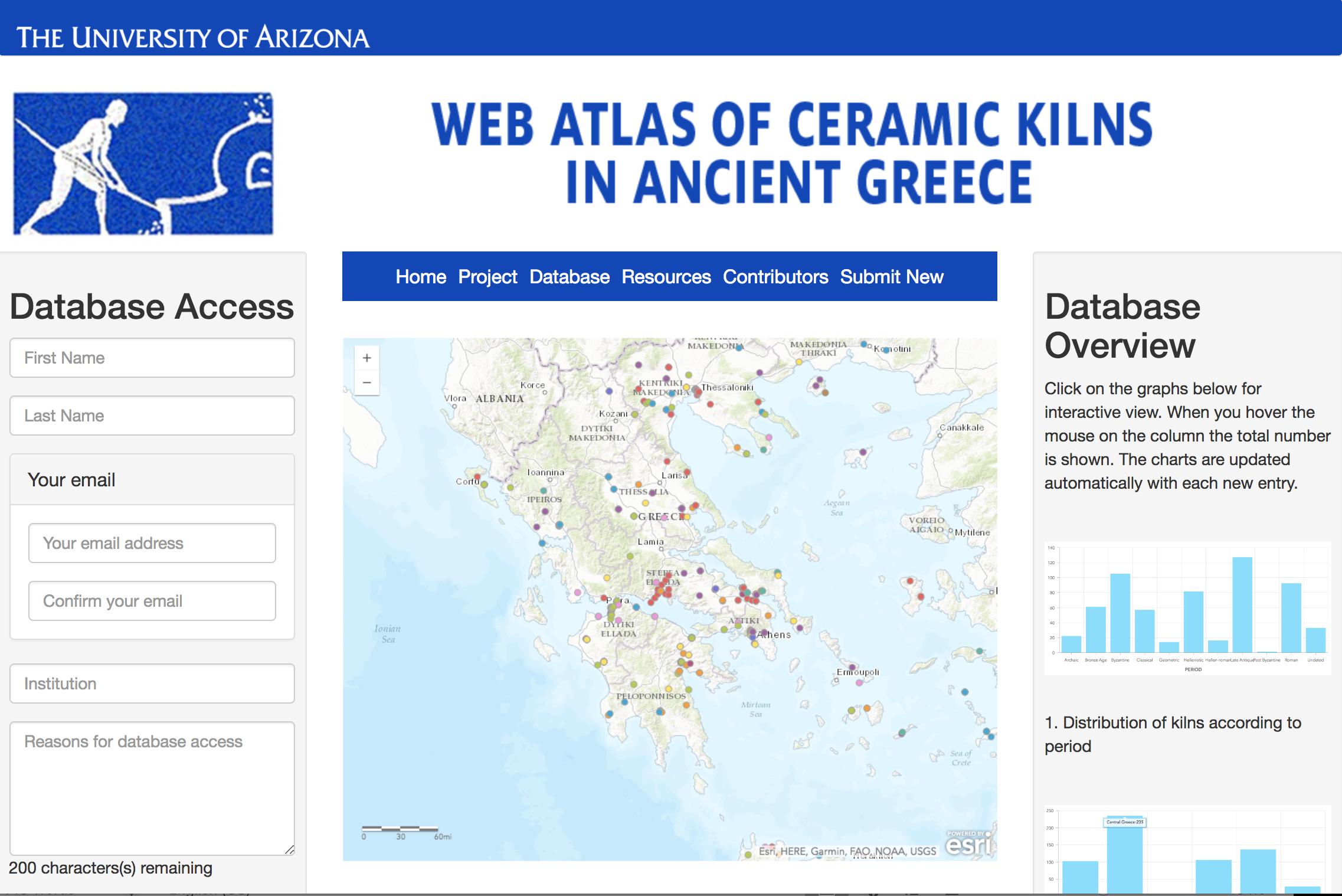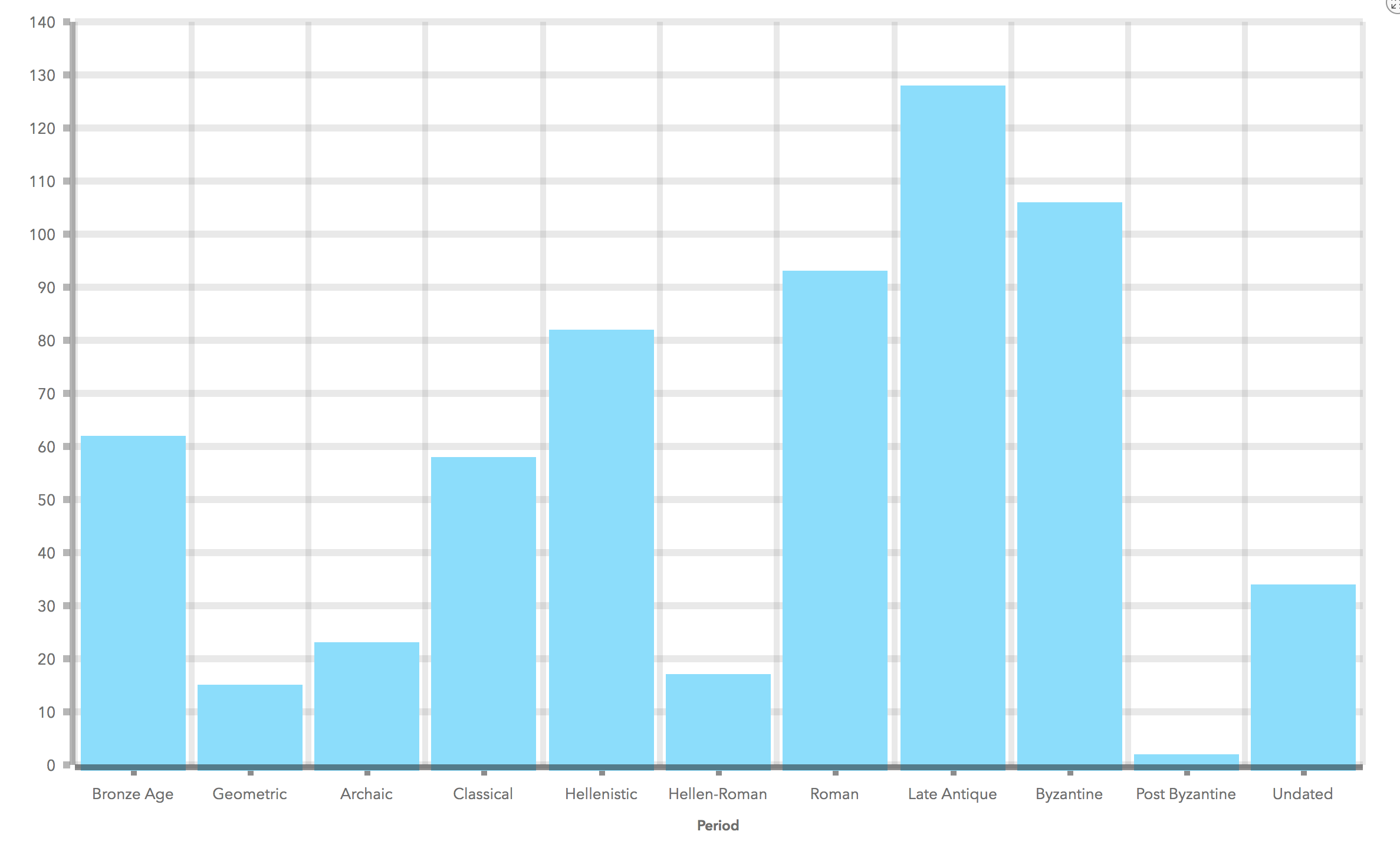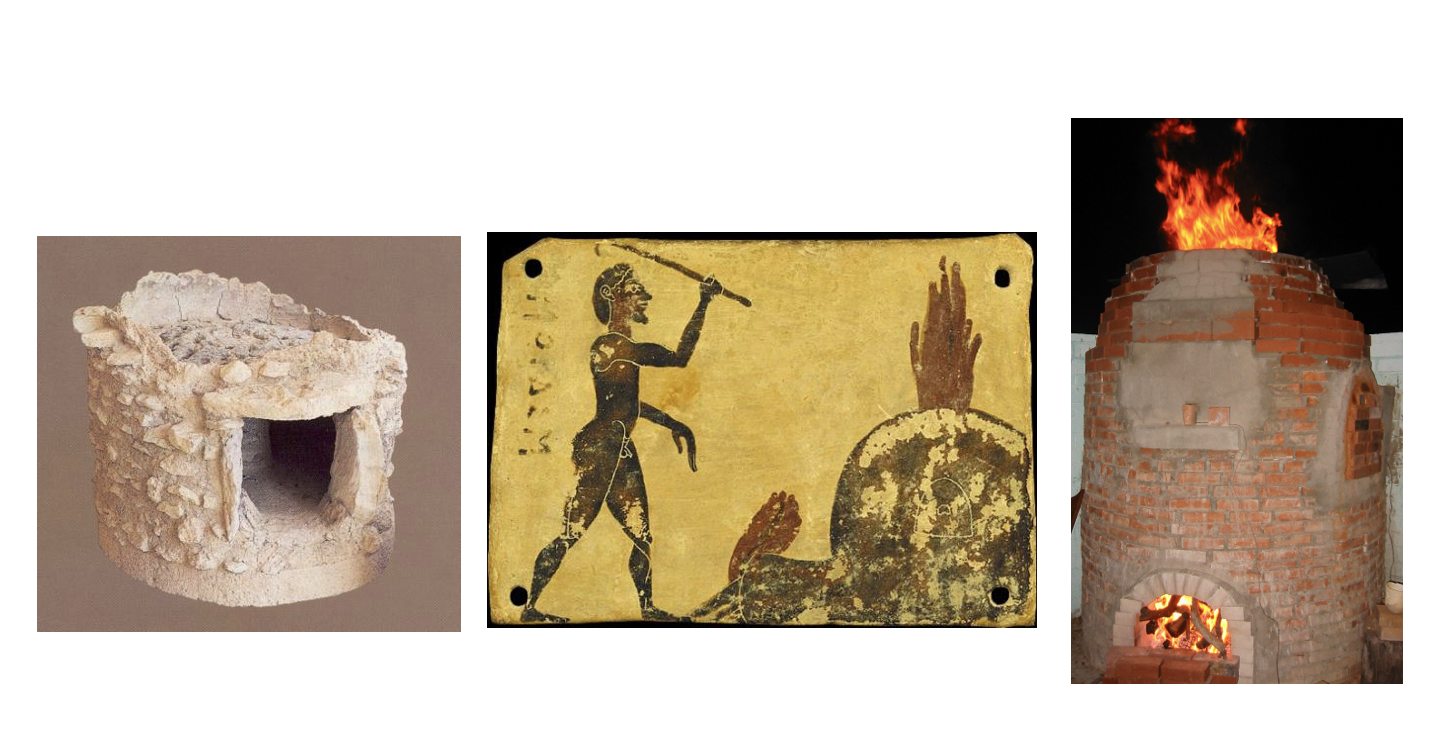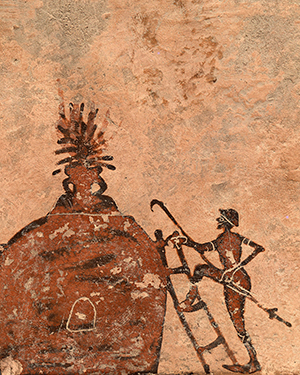
Dr. Eleni Hasaki at the stoking channel of a kiln at a ceramics workshop on Paros.
Accessing Greek Kilns Online: An Interview with Kiln WebAtlas Director and ASCSA Alumna Eleni Hasaki
“Over the years, I have ventured a little bit to other projects but kilns have always had a gravitational force for me and I keep coming back to them!”
Kilns have captivated the attention of Associate Professor of Anthropology and Classics at University of Arizona Eleni Hasaki for as long as she can remember, especially so during her time at the American School of Classical Studies at Athens. As a Regular and Associate Member, Hasaki concentrated her dissertation from Ancient Greek crafts to ceramic kilns. “As an ASCSA Member, I was able to visit several archaeological Ephorates around Greece with the regional bus system,” recalled Hasaki. “It was an incredibly rewarding time to not only develop the topic, but also to establish the basis for what would eventually be the WebAtlas of Ceramic Kilns in Ancient Greece.”

Professor Hasaki measuring a kiln at the Roman workshop at Paroikia, Paros which specialized in coarsewares and rooftiles.
For her dissertation research, Hasaki analyzed over 450 kilns dating from Geometric through to Classical Greece. “A huge part of my dissertation was the compilation of an Excel database,” Hasaki described. “While the more analytical focus was for kilns from the Geometric to Classical times, the statistics and appendix included a much broader window from Prehistoric times to the Byzantine period. It all took countless hours poring over the Archaeologikon Deltion reports, which inspired me to figure out a way to make the information more accessible.”
Published in Modern Greek and only available in specific libraries, Archaeologikon Deltion reports have been notoriously hard to access, although some digitization efforts have begun. Announcements of new kiln sites seem to be continuously appearing, and the archaeologists need to have ways of accurately capturing this constantly changing landscape of ceramic production. “Because kiln sites keep coming up, any statistics can quickly run the risk of becoming outdated very soon after publication,” explained Hasaki. “Whereas if you upload data into a dynamic interface it would allow scholars to have the most updated information. This is where the WebAtlas comes in.”

WebAtlas of Ceramic Kilns in Ancient Greece homepage.
Building the WebAtlas Database
Developing Hasaki’s dissertation Excel database into the WebAtlas of Ceramic Kilns in Ancient Greece required collecting location data points for known kilns and extensive work in GIS. “One of the team members, Classics MA graduate Lauren Alberti, was taking courses for a graduate certificate in GIS at the University of Arizona. “I suggested for her to work with the ceramics database instead of mapping cell phone towers around the Southwest,” Hasaki said with a laugh. “Thankfully Alberti agreed and she heroically set out to collect coordinates.”
Alberti, with assistance by University of Arizona Professor of Geography and Regional Development Gary Christopherson, began to develop the GIS database by first referencing Archaeologikon Deltion reports in search of information on kiln sites discovered during salvage excavations carried out by the Greek archaeological service. Hasaki further explained that the majority of kilns are uncovered during these salvage excavations and are entered into the reports by region, city, and street. The archaeologists provide incredible details about their excavations, all the more remarkable given their tight schedules. In most cases, they take pictures and draw the important material, but often the kilns are backfilled afterwards, making them difficult to locate in the present day. “Alberti cross-referenced information in the Archaeologikon Deltion reports with Google Maps to search for coordinates of each kiln that could then be put into the GIS database for the WebAtlas,” said Hasaki. “It was quite challenging for her to find exact coordinates for kilns in the countryside and she frequently had to think of how street names are transliterated in Google from Modern Greek to English.”
At the University of Arizona, Hasaki also collaborated with a member of the School of Geography, Tawny Lochner, to design the interface and develop search capabilities of the WebAtlas. The website was officially launched in 2017 and more than 3,000 visitors have consulted the site to date.
Future of the WebAtlas
Now that the website is live with over 600 entries, Hasaki and her team are looking ahead to future additions and improvements to the WebAtlas. The latest feature includes automatically generated charts illustrating kiln sites sorted by periods, regions, and size. “On the homepage, you can now see three charts created from the WebAtlas data,” Hasaki described. “It is our hope that scholars and students will use these comprehensive graphics and find them very useful for obtaining a panoramic view of the current state of research. Several archaeologists have already contributed to the WebAtlas with new entries or updating existing ones using the “Submit New Kiln Form.” Researchers can access kiln information and relevant bibliography immediately without having to spend time tracking down Archaeologikon Deltion reports. Hopefully this will enable them to integrate the kiln data into their own projects, whether it is the publication of a newly-discovered kiln site or the study of distribution patterns for a specific ceramic type.”

Graph depicting distribution of kilns according to period.
Long-term plans for the WebAtlas will expand coverage of the Bronze Age kiln sites in partnership with project collaborator Ioannis Pappas, an archaeologist at the Ephorate of Piraeus and Islands. “My contribution to the program is the complete recording of all the published Bronze Age kilns of the Aegean, following the typological classification of Dr. Hasaki,” explained Pappas, who is also writing his dissertation on Bronze Age ceramic kilns in the Eastern Mediterranean at the University of Crete. “Therefore, our aim is to provide the basic information on all kilns of that period, as well as a primary bibliographic reference to continue research.”
Additionally, at the University of Arizona, Ph.D. candidate of Anthropology Stephanie Martin has enhanced the entries with thumbnails of visual materials, such as photos and drawings, to existing entries. Both Alberti and Martin put to good use their graduate GIS certificates while working on the WebAtlas. As archaeological data sets become increasingly larger, the WebAtlas of Ceramic Kilns in Ancient Greece is a prime example of how Digital Humanities projects can contribute and invite scholars to ask bigger questions on ceramic production, distribution and consumption, in order to understand better the technologies, trade systems, and economical structures of the ancient world. “Our goal is to make the WebAtlas as user-friendly as possible in all contexts, from the classroom to the excavation trench,” furthered Hasaki.

Archaeological, iconographic, and experimental evidence for ancient Greek kilns.
The WebAtlas has already been introduced into undergraduate curriculum at the University of Athens, by project collaborator Dr. Konstantinos Raptis, an expert on Late Antique and Byzantine kilns from the Ephorate of Antiquities of Thessaloniki and Visiting Lecturer at the University of Athens. “I am offering an elective course on Byzantine craft workshops with kilns,” said Raptis. “I plan to introduce the WebAtlas to the students as a new, extremely useful research tool for the study of Byzantine pottery and brick kilns.”
Hasaki also hopes to increase the awareness of the WebAtlas with a new grant from the College of Humanities at the University of Arizona. One way she reaches wider audiences has been to present live demos of the WebAtlas at conferences. At the 12th International Conference on Medieval and Modern Ceramics in the Mediterranean (XII AIECM3), held in Athens last October, Dr. Raptis, facilitated a workshop. “Presenting a live demo of the WebAtlas to the Archaeologists and various specialists on Medieval ceramics and ceramic kilns was an extremely fruitful experience,” recalled Raptis. “I had positive feedback from colleagues and specialists from all over the world, who felt that analogous projects have to be built for kilns of other regions of the Mediterranean as well. I am very optimistic that the WebAtlas will be the prototype for more scientific projects in the future.”
More from Hasaki on Kilns

Figure from Hasaki’s upcoming monograph, “Potters at Work in Ancient Corinth: Industry, Religion and the Penteskouphia Pinakes”
Dr. Eleni Hasaki was the Gertrude Smith Professor for the ASCSA Summer Session in 2009 and is an ASCSA Managing Committee member. Currently on sabbatical at Harvard University’s Center for Hellenic Studies in Washington D.C., Hasaki has many exciting projects in the works. At the CHS, she is collaborating with George Washington University History professor Diane Harris Cline on a formal Social Network Analysis of Athenian potters and painters in 6th and 5th c., which adds the human dimension behind the kilns featured in the WebAtlas. Her monograph, an ASCSA Publications Hesperia Supplement, Potters at Work in Ancient Corinth: Industry, Religion and the Penteskouphia Pinakes, is in the final stages of publication. She is also finishing an article detailing her remarkable experiences after constructing an experimental replica of an Ancient Greek kiln in Tucson, Arizona (www.aiatucson.arizona.edu)!